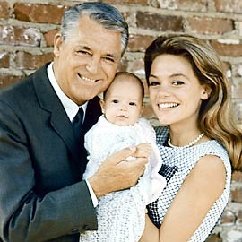
A filling station, also known as a gas station (US) or petrol station (UK), is a facility that sells fuel and engine lubricants for motor vehicles. The most common fuels sold in the 2010s were gasoline (or petrol) and diesel fuel.
Gasoline pumps are used to pump gasoline, diesel, compressed natural gas, CGH2, HCNG, LPG, liquid hydrogen, kerosene, alcohol fuel (like methanol, ethanol, butanol, propanol), biofuels
(like straight vegetable oil, biodiesel), or other types of fuel into the tanks within vehicles and calculate the financial cost of the fuel transferred to the vehicle. Besides gasoline pumps, one other significant device which is also found in filling stations and can refuel certain (compressed-air) vehicles is an air compressor, although generally these are just used to inflate car tires.
Many filling stations provide convenience stores, which may sell confections, alcoholic beverages, tobacco products, lottery tickets, soft drinks, snacks, coffee, newspapers, magazines, and, in some cases, a small selection of grocery items, such as milk. Some also sell propane or butane and have added shops to their primary business. Conversely, some chain stores, such as supermarkets, discount stores, warehouse clubs, or traditional convenience stores, have provided fuel pumps on the premises.
In North America the fuel is known as "gasoline" or "gas" for short, and "gas station" and "service station" are used in the United States, Canada, and the Caribbean. In some regions of Canada, the term "gas bar" (or "gasbar") is used. In the rest of the English-speaking world the fuel is known as "petrol", and the term "petrol station" or "petrol pump" is used. In the United Kingdom, Ireland, New Zealand and South Africa "garage" and "forecourt" is still commonly used. Similarly, in Australia, New Zealand, the United Kingdom, and Ireland, the term "service station" describes any petrol station; Australians also call it a "servo".
In India, Pakistan and Bangladesh, it is called a "petrol pump" or a "petrol bunk". In Japanese, a commonly used term is gasoline stand although the abbreviation SS (for service station) is also used.
The first filling station was the city pharmacy in Wiesloch, Germany, where Bertha Benz refilled the tank of the first automobile on its maiden trip from Mannheim to Pforzheim back in 1888. Shortly thereafter other pharmacies sold gasoline as a side business. Since 2008 the Bertha Benz Memorial Route commemorates this event.
The increase in automobile ownership after Henry Ford started to sell automobiles that the middle class could afford resulted in an increased demand for filling stations. The world's first purpose-built gas station was constructed in St. Louis, Missouri, in 1905 at 420 South Theresa Avenue. The second station was constructed in 1907 by Standard Oil of California (now Chevron) in Seattle, Washington, at what is now Pier 32. Reighard's Gas Station in Altoona, Pennsylvania claims that it dates from 1909 and is the oldest existing filling station in the United States. Early on, they were known to motorists as "filling stations". These filling stations were known to wash your windows for free.
The first "drive-in" filling station, Gulf Refining Company, opened to the motoring public in Pittsburgh on December 1, 1913, at Baum Boulevard and St Clair's Street. Prior to this, automobile drivers pulled into almost any general or hardware store, or even blacksmith shops in order to fill up their tanks. On its first day, the station sold 30 US gallons (110 L) of gasoline at 27 cents per gallon (7 cents per litre). This was also the first architect-designed station and the first to distribute free road maps. The first alternative fuel station was opened in San Diego, California, by Pearson Fuels in 2003.
Maryland officials said that on September 26, 2019, RS Automotive in Takoma Park, Maryland became the first filling station in the country to convert to an EVER charging station.
In the United States and Canada, there are generally two marketing types of filling stations: premium brands and discount brands.
Pre-payment is the norm in the US and customers may typically pay either at the pump or inside the gas station. Modern stations have pay-at-the-pump functions: in most cases credit, debit, ATM cards, fuel cards and fleet cards are accepted. Occasionally a station will have a pay-at-the-pump-only period per day, when attendants are not present, often at night, and some stations are pay-at-the-pump only 24 hours a day.
Types of service
Filling stations typically offer one of three types of service to their customers: full service, minimum service or self-service.
- Full service
- An attendant or gas jockey operates the pumps, often wipes the windshield, and sometimes checks the vehicle's oil level and tire pressure, then collects payment and perhaps a small tip.
- Minimum service
- An attendant operates the pumps. This is often required due to legislation that prohibits customers from operating the pumps.
- Self service
- The customer performs all required service. Signs informing the customer of filling procedures and cautions are displayed on each pump. Customers can still enter a store or go to a booth to give payment to a person.
- Unmanned
- Using cardlock (or pay-at-the-pump) system, these are completely unstaffed.
- 2 tablespoons vegetable oil
- 1 large onion, chopped
- 3 cloves garlic, minced
- 2 pounds ground beef
- 1 (28-ounce) can crushed tomatoes
- 2 tablespoons chili powder
- 1 teaspoon ground cumin
- 1 teaspoon salt
- 1 teaspoon black pepper
- 2 (16-ounce) cans red kidney beans, drained
- 1 (8-1/2-ounce) package corn muffin mix
- 1 cup (4 ounces) shredded Mexican cheese blend
- In a large pot over medium-high heat, heat oil; saute onion and garlic 5 minutes, or until tender. Add ground beef and brown 8 to 10 minutes, or until no pink remains; drain off excess liquid. Add remaining ingredients except muffin mix and cheese; mix well. Cover and simmer over low heat 20 to 25 minutes, or until thickened.
- Preheat oven to 375º. Coat a 9- x 13-inch baking dish with cooking spray.
- Spoon chili into prepared baking dish. Prepare muffin mix as directed on package; stir in cheese. Spread mixture over chili.
- Bake 20 minutes, or until a toothpick inserted in center of cornbread topping comes out clean. Cool slightly and serve.
1865 – The New York Stock Exchange opens its first permanent headquarters at 10-12 Broad near Wall Street in New York, New York.
1896 – Utah is admitted as the 45th U.S. state.
1999 – Former professional wrestler Jesse Ventura is sworn in as governor of Minnesota.
And births this date include....
1927 – Barbara Rush, American actress
1937 – Dyan Cannon, American actress
1941 – Maureen Reagan, American political activist (d. 2001)
1965 – Julia Ormond, English actress
The word spaghetti is plural for the Italian word spaghetto, which is a diminutive of spago, meaning “thin string” or “twine.”
Spaghetti Origins
On Top of Spaghetti
All covered with cheese,
I lost my poor meatball,
When somebody sneezed.
And on to the floor,
And then my poor meatball,
Rolled out of the door.”













